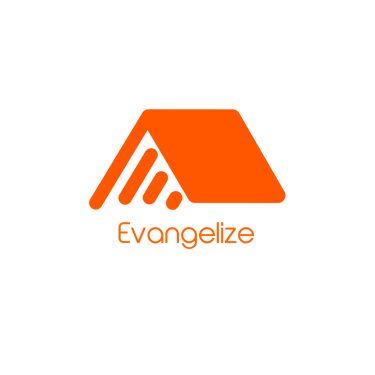Mastering Post-Merger Integration: A Use-Case in Strategic Transformation
Platform growth is no longer purely organic. Private-equity and venture investors expect acquisition-led expansion to drive scale, diversification, and margin uplift. Our scenario centres on a VC-backed proptech platform seeking to build a unified national footprint through the acquisition of multiple regional agencies. Each target business operates independently, with distinct CRMs, payroll systems, and client onboarding models.
David Hole
10/6/20255 min read


1. The Context – Scaling Through Acquisition
Platform growth is no longer purely organic. Private-equity and venture investors expect acquisition-led expansion to drive scale, diversification, and margin uplift.
Our scenario centres on a VC-backed proptech platform seeking to build a unified national footprint through the acquisition of multiple regional agencies. Each target business operates independently, with distinct CRMs, payroll systems, and client onboarding models.
The mandate for the Head of Strategic Integration & Transformation is clear:
Deliver end-to-end integration of each acquired agency within twelve months.
Build a scalable Integration Management Office (IMO) that can handle 2–3 concurrent integrations initially, and 10–20 within two years.
Achieve this while maintaining operational continuity, client satisfaction, and cultural cohesion.
This requires a rare hybrid profile — a strategist with consulting discipline, an operator with delivery instinct, and a leader capable of managing transformation under pressure.
2. Strategy Phase – Designing the Integration Blueprint
The work begins well before the ink dries on the acquisition agreement. During deal origination and due diligence, the integration leader must participate as an equal alongside investment and legal teams, ensuring the deal’s value creation logic is underpinned by operational reality.
A structured Integration Blueprint is established, informed by methodologies from top-tier consulting practice:
ComponentDescriptionPurposeSynergy ThesisQuantifies value levers (revenue uplift, cost synergies, margin gains).Creates an ROI narrative for investors.Readiness AssessmentEvaluates people, process, and system maturity of the target.Defines Day-1 priorities and Day-100 roadmap.Integration Sequencing ModelPrioritises high-value integrations for early wins.Avoids over-extension of resources.Risk RegisterIdentifies cultural, contractual, or data risks.Informs communication and mitigation plans.Governance CharterEstablishes reporting cadence, escalation routes, and steering forums.Maintains executive alignment.
Best-Case Example:
When Agency A (£12.4 million turnover) was acquired, early due diligence uncovered misaligned client categorisation and billing cycles that could have disrupted revenue recognition. By modelling alternative ledger configurations before completion, the integration team avoided a potential £300k accounting adjustment post-close.
The strategy phase concludes with a Day-One Integration Playbook — a structured 12-week tactical plan defining immediate deliverables across technology, finance, HR, and customer operations.
3. Discovery and Mobilisation – Building the Integration Engine
Within 30 days of deal closure, the integration office activates. A dedicated Integration Management Office (IMO) is established, comprising 5–10 cross-functional specialists drawn from finance, HR, technology, and operations.
Each IMO member owns a specific workstream:
Data Migration Lead – ensures all client and financial data are mapped, cleansed, and imported.
Finance Consolidation Lead – unifies chart of accounts, payroll, and cost centres.
HR & Culture Lead – manages employment transitions, contract harmonisation, and communication.
Technology Lead – rationalises systems, licenses, and vendor contracts.
Client Transition Lead – ensures seamless continuity for external customers.
Daily stand-ups maintain momentum. All integration workstreams are managed through a digital control tower (typically Asana or Monday.com) that tracks 300-plus interdependencies with automated alerts.
Best-Case Example:
During the Agency B (£10.8 million revenue) integration, the IMO used a pre-configured automation pipeline in Azure Data Factory to merge 2,000 client and supplier records across Yardi and HubSpot. This was completed in a single weekend with zero data corruption, and client service levels remained stable throughout.
By week twelve, all agencies are assessed against a Baseline Scorecard measuring:
System harmonisation (CRM, ERP, HRIS)
Cost centre alignment
Staff onboarding completion
Customer retention and service continuity
This early discipline ensures repeatability — the foundation for scaling from 3 to 20 integrations per year.
4. Operational Execution – Managing the Integration Lifecycle
The core challenge is not whether integration can be done, but how consistently and simultaneously it can be executed. To achieve this, the leader applies a repeatable integration pipeline structured around defined time horizons:
PhaseTimeframeObjectiveKPI TargetStabilisation (0–30 days)Transition critical services and secure data continuity.100% payroll and CRM continuity.Harmonisation (31–90 days)Standardise core processes (billing, reporting, client onboarding).80% operational alignment.Optimisation (91–180 days)Eliminate duplication, rationalise suppliers, migrate systems.≥10% cost reduction.Acceleration (181–365 days)Embed common KPIs, performance dashboards, and culture alignment.≥15% margin uplift.
Best-Case Example:
When integrating Agency C (£14.9 million turnover), legacy systems were retired, and processes migrated to Microsoft Dynamics 365. The result: billing automation increased by 38%, the monthly close cycle shortened from 12 days to 4, and customer onboarding time reduced by 40%.
Simultaneously, a digital performance dashboard was implemented to track revenue per FTE, customer churn, and synergy realisation — all benchmarked weekly.
5. Cultural Integration – Leading People Through Transition
Even the most technically precise integration will fail without cultural cohesion. This phase focuses on communication, leadership visibility, and employee engagement.
The Head of Integration creates a Change Communication Plan with three tiers of engagement:
Leadership Alignment – CEO briefings and cross-agency leadership forums to set unified direction.
Employee Engagement – town-halls, FAQs, and intranet updates to reduce uncertainty.
Customer Assurance – proactive updates assuring continuity of service and introducing shared brand values.
Each acquired company is paired with a Transition Champion — a respected leader from the parent organisation embedded within the target for 90 days to accelerate trust and adoption.
Best-Case Example:
In the Horizon–RAIN–Alchemist L&D acquisition (a parallel scenario in professional services), turnover intention dropped from 27% to 12% within the first six months post-merger, attributed to transparent communications and leader accessibility.
6. Continuous Improvement – Institutionalising the Integration Model
Once the initial integrations stabilise, the IMO evolves from a project function into a strategic enabler — capturing lessons learned, refining playbooks, and automating repetitive tasks.
Key enablers include:
Integration Repository: Central library of process maps, templates, and checklists for reuse.
Post-Integration Audits: Conducted 6 and 12 months post-close to evaluate synergy delivery.
Data-Driven Insights: Continuous feedback loop from operational KPIs informs future acquisition due diligence.
A culture of integration-as-a-service emerges, where the business can absorb new acquisitions at speed and minimal disruption — a critical differentiator in competitive markets.
Best-Case Example:
By the second year, the platform scaled to nine concurrent integrations with a 92% on-time completion rate. Average integration time fell from 40 weeks to 28, and synergy capture exceeded the original investment thesis by 16%.
7. The Human Element – Leadership in High-Velocity Environments
High-performance integration demands not only frameworks but emotional intelligence. The most effective leaders demonstrate:
Calm Authority: The ability to maintain composure in complex, multi-party negotiations.
Structured Empathy: Balancing data-driven decisions with an understanding of cultural sensitivities.
Decisive Execution: Knowing when to pivot, when to pause, and when to push through resistance.
Their credibility comes not from title, but from the ability to deliver measurable transformation repeatedly under pressure.
8. Measuring Success – Beyond Transactional Completion
A transaction is only complete when it creates value, not when legal papers are signed. The ultimate KPIs extend beyond integration completion:
CategoryKPITarget OutcomeFinancialEBITDA uplift+15–20% within 12 monthsOperationalCost-to-revenue ratio↓ by 10–12%TechnologySystem rationalisation<3 core platformsCustomerChurn<3% during transitionPeopleeNPS+15 improvementGovernanceReporting cadenceMonthly integration dashboards
These KPIs form the backbone of board reporting and investor updates, aligning the integration function with measurable enterprise value creation.
9. Conclusion – From One-Off Deals to an Integration Machine
Delivering successful integrations in under one year is the mark of a mature transformation capability.
The best Heads of Strategic Integration & Transformation evolve their organisations from reactive deal integration to repeatable value creation — a process that transforms the acquisition pipeline into a sustainable growth engine.
When executed correctly, the result is a business capable of:
Absorbing acquisitions without operational disruption.
Unlocking synergies faster than investor expectations.
Embedding a unified culture of performance, transparency, and accountability.
Such leaders do not merely “manage deals”; they architect ecosystems — turning complexity into order and acquisition into advantage.
